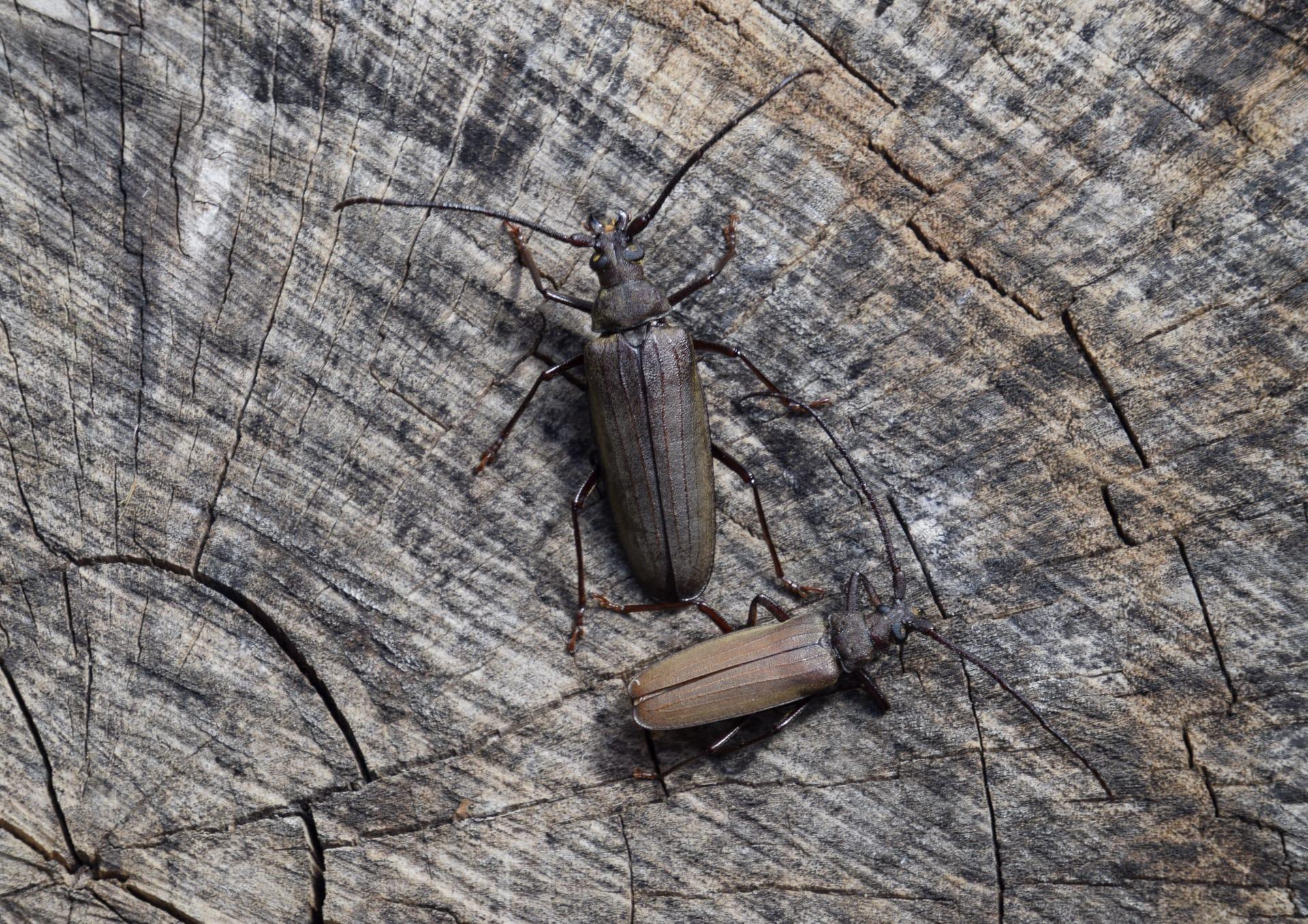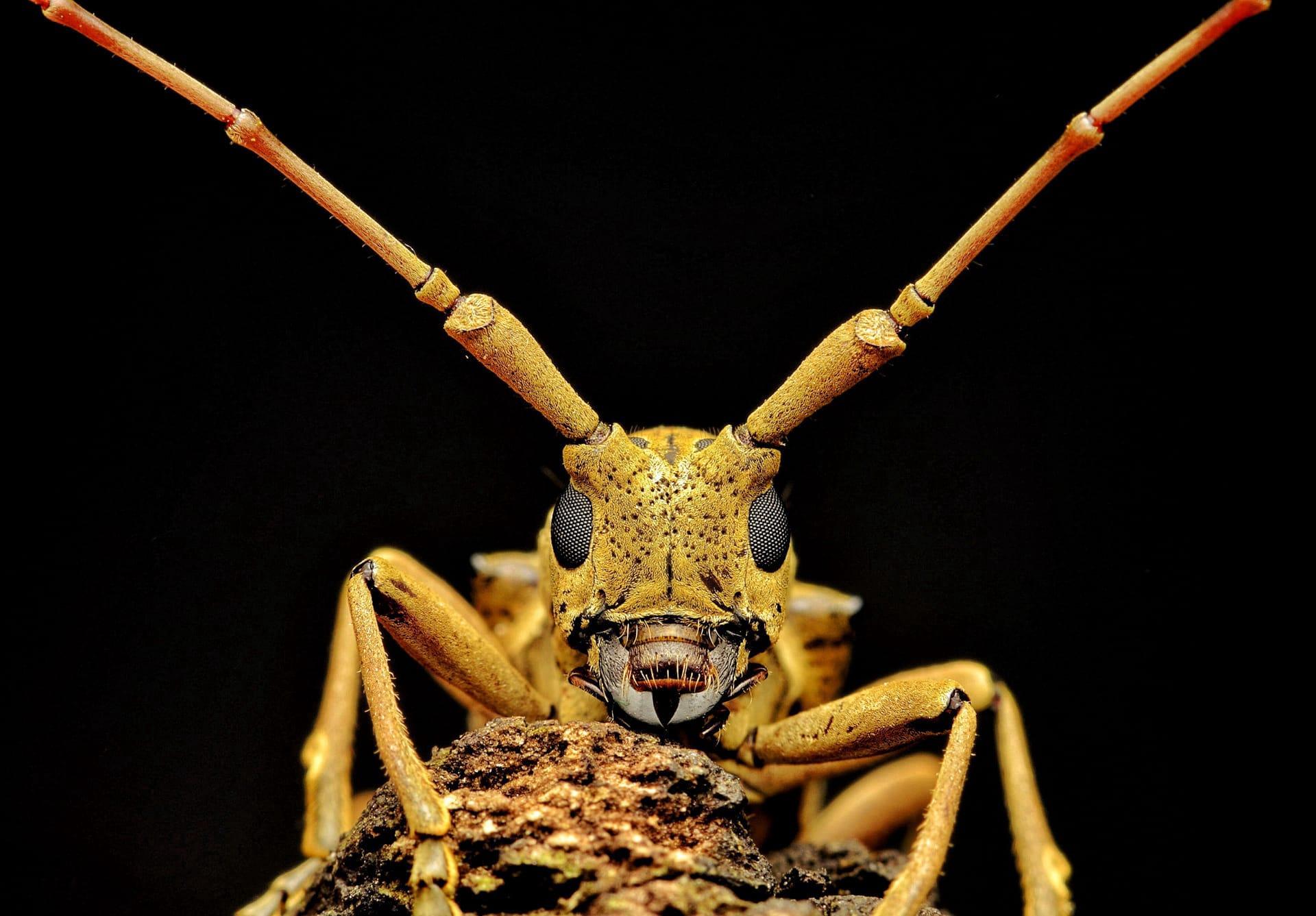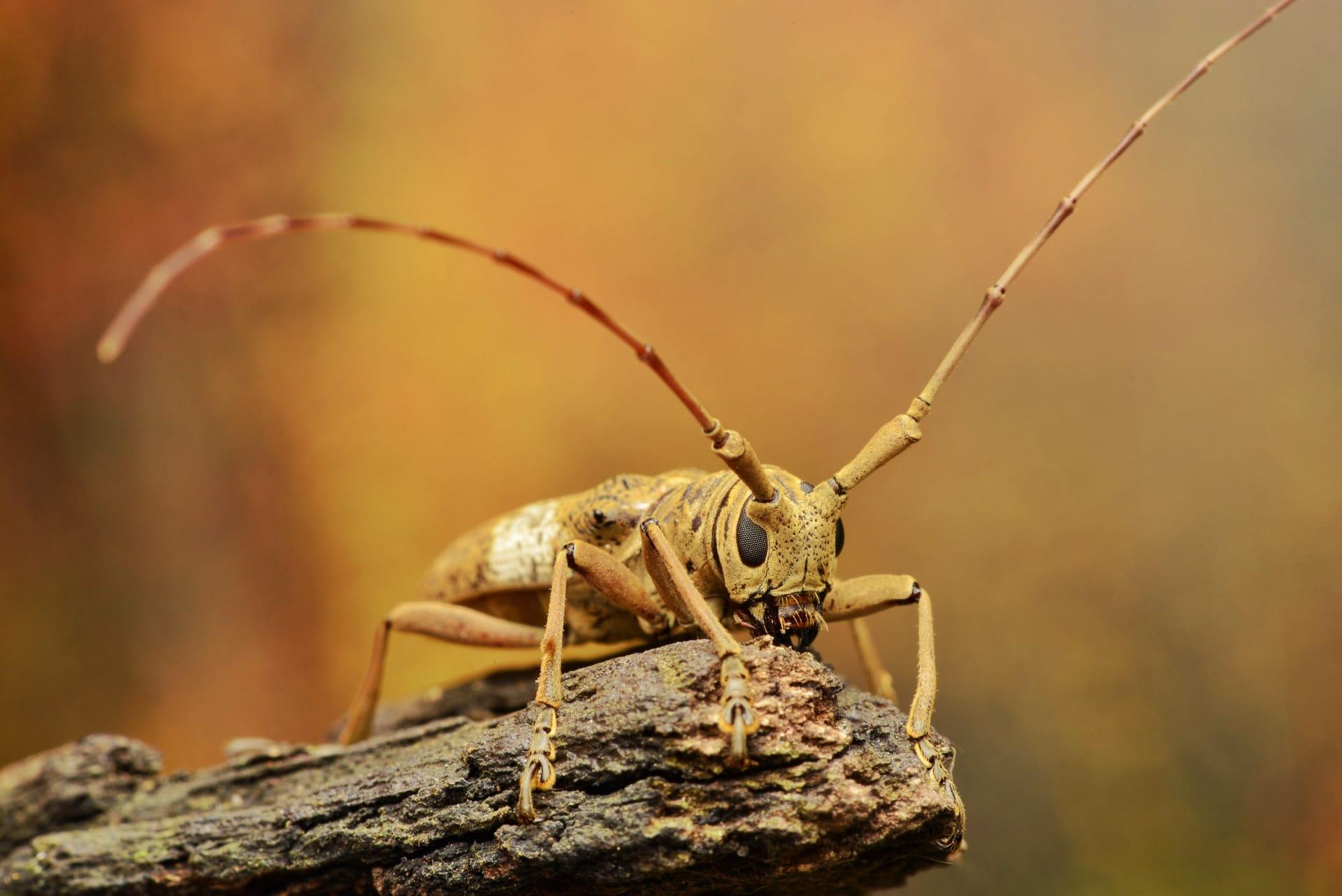Longhorn Beetle
- Home /
- Mini Encyclopedia /
- Animal /
- Longhorn Beetle
1
Longhorn beetles, scientifically known as Cerambycidae, are a diverse family in the insect order Coleoptera. They are characterized by their exceptionally long antennae, often exceeding their own body length. This family is vast, encompassing over 35,000 species in more than 4,000 genera worldwide. The diversity is remarkable, with species varying greatly in size, color, and shape. Some are as small as 0.2 inches (5 mm), while others reach lengths of over 6 inches (15 cm). Their colors range from muted browns and blacks to vibrant reds, greens, and yellows, often with intricate patterns that aid in camouflage or mating.
These beetles have a global distribution, found on every continent except Antarctica. They are particularly abundant in tropical and subtropical regions, where the greatest species diversity is observed. In North America, for example, there are about 1,200 species, while the fauna of Southeast Asia is even richer. Longhorn beetles inhabit a variety of environments, from dense forests to arid deserts. They are often found on trees, logs, and decaying wood, where they play a crucial role in the ecosystem as decomposers. Some species, however, are known to be pests in forestry and agriculture, damaging live trees and crops.

2
Question: Is it true that all longhorn beetles are harmful to trees and crops?
Answer: This is a common misconception. While it's true that some longhorn beetle species can be detrimental to forests and agricultural fields, not all are harmful. In fact, many species of longhorn beetles are essential components of their ecosystems. The larvae of most species are wood-borers, feeding on dead or dying wood, and thus play a significant role in decomposing and recycling nutrients back into the soil. Only a minority of species are considered pests, such as the Asian longhorn beetle, which can cause significant damage to hardwood trees. It's important to recognize the ecological benefits provided by the majority of longhorn beetle species, which help maintain healthy forest ecosystems.

3
Longhorn beetles have developed fascinating survival strategies to thrive in various environments. One key strategy is their wood-boring larvae. These larvae have strong, specialized mandibles that allow them to tunnel into wood for feeding and protection. This not only provides them with a rich source of nutrients but also shields them from many predators. The larvae can spend several years inside the wood, depending on the species and environmental conditions, undergoing several developmental stages before emerging as adults.
Another survival strategy is their mimicry and camouflage. Many longhorn beetles have evolved to mimic the appearance of wasps, bees, and other insects that are unpalatable or dangerous to predators. This form of Batesian mimicry serves as an effective defense mechanism. Additionally, their coloring and patterns often help them blend into their surroundings, making it difficult for predators to spot them. This combination of physical and behavioral adaptations has enabled longhorn beetles to successfully populate a wide range of habitats.

4
In the ecosystem, longhorn beetles play multiple vital roles. As decomposers, their larvae contribute significantly to the breakdown of dead and decaying wood, facilitating nutrient recycling and promoting forest health. This decomposition process is crucial for the ecosystem, as it helps in the formation of rich soil and clears away dead trees, making space for new growth. Moreover, as part of the food web, longhorn beetles serve as prey for various animals, including birds, mammals, and other insects.
The role of longhorn beetles in pollination is often overlooked. Adult beetles feed on nectar and pollen, thereby inadvertently transferring pollen from one flower to another. This pollination is essential for the reproduction of many plant species, contributing to the biodiversity of their habitats. However, certain species can negatively impact ecosystems when introduced into non-native environments. For instance, invasive species like the Asian longhorn beetle can decimate hardwood forests, leading to significant ecological and economic repercussions.

5
Film: "The Hidden World of the Longhorn Beetle" is a documentary produced in the United Kingdom in 2021. This captivating film explores the intricate life cycle and diverse habitats of longhorn beetles. It highlights their role in ecosystems, showcasing both their beneficial aspects as decomposers and the challenges posed by invasive species. The documentary features stunning macro photography, revealing the extraordinary details of these insects, from their elongated antennae to their varied patterns and colors.
Book: "Longhorn Beetles of the World" by Jonathan L. Atkinson, published in the United States in 2019, is an extensive guide. It delves into the classification, behavior, and ecology of longhorn beetles. Atkinson, an entomologist, provides detailed descriptions and high-quality images of various species, making it a valuable resource for both scientists and enthusiasts.
Book: "Beetles of Beauty: A Study of the Longhorn Beetle" by Emily R. Wilson, released in Canada in 2020, offers a unique perspective on these insects. Wilson, a nature writer, combines scientific facts with engaging narratives to illustrate the beauty and importance of longhorn beetles in nature. The book includes personal anecdotes from her field research and insights into the conservation efforts for these fascinating creatures.